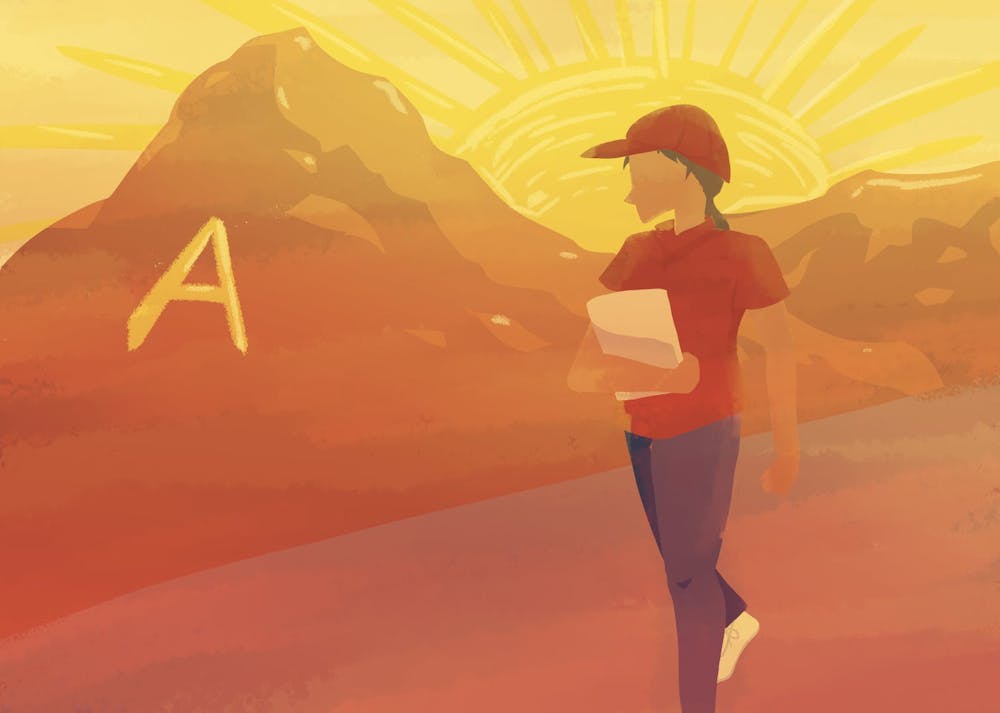Besides keeping cool and staying hydrated, experts say ASU students and Phoenix residents have more to worry about as historic heat grips the Southwest: power outages.
An Environmental Science & Technology study published in May sought to understand the public health impacts of a concurrent heat wave and blackout in three major American cities. The study found that if a multiday heat wave and electrical grid failure occurred simultaneously in Phoenix, the city’s residents would be in extreme danger.
Half of Phoenix’s 1.6 million residents would need urgent medical attention, and 1% of the population, or 13,250 people would die. The study said this would create a crisis for the city with fewer than 3,000 emergency room beds.
The impacts of an event of this magnitude are expected to become substantially worse in the coming decades — with deaths and illnesses doubling by 2085 — due to rising temperatures as a result of climate change. Incidences of power grid failures and resulting outages across the United States more than doubled from 2015 to 2021, the study said, with most occurring in the summertime.
Meanwhile, Phoenix ended its streak on Monday after 31 straight days with temperatures at or above 110 degrees. The previous record was set in 1974 after the city had 18 consecutive days of 110-degree or hotter temperatures.
Mikhail Chester, the director of ASU’s Metis Center for Infrastructure and Sustainable Engineering, said that although a coinciding heat wave and blackout in Phoenix is a low-probability event, that should not prevent the city's residents from taking the risk seriously.
“Because it's very unlikely, we collectively tend to marginalize that risk to zero or dismiss it altogether,” Chester said. “But climate change is creating conditions where the likelihood of that event playing out is becoming much more likely.”
Previous studies co-authored by Chester found that for every degree increase in average air temperature, Phoenix’s risk of power outage increases 30-fold and that escalating vulnerabilities within the city’s interdependent water and power infrastructure systems could lead to a “Katrina of extreme heat."
“Could you have a confluence of very low likelihood conditions that come together to create a large-scale blackout? Yes, you can,” Chester said. “We see breadcrumbs in Phoenix of the conditions that would need to take place in order to create that Katrina of extreme heat.”
Chester said that work to create preventative and reactive solutions for Phoenix’s grid vulnerability will take decades, if not longer.
Along with transitioning to renewable energy from fossil fuel infrastructure and shoring up battery storage, he suggested prioritizing infrastructure improvements for groups most vulnerable to extreme heat, including the city's unhoused population.
However, Arizona's two primary utility companies, Arizona Public Service and Salt River Project say they are prepared for the worst.
APS, which services ASU’s Tempe, Downtown Phoenix and West campuses, said it has not experienced a scenario like the one described in the Environmental Science & Technology study and that storms, not heat waves, are the main cause of power grid disruptions in the Phoenix area.
“APS works with ASU and other customers to ensure electrical systems are as strong as possible and our team plans year-round for summer,” an APS spokesperson said in a prepared statement. “Each year APS invests more than $1.5 billion to maintain and upgrade the grid, replacing aging electrical equipment and installing new technology to continue providing the reliable service customers count on.”
Salt River Project, which provides power to ASU’s Polytechnic campus, said in a statement that they carry more than 1,200 megawatts of reserve resources in case generation units become unavailable and that it performs regular drills with state emergency response agencies in preparation for possible grid disruptions.
Ariane Middel, a Senior Global Futures Scientist with the Julie Ann Wrigley Global Futures Laboratory at ASU, said more needs to be done to address the city's urban design which makes it difficult to prepare for heat wave-induced blackouts.
“The problem is that Phoenix, and the whole metro area, is built around the assumption that there is air conditioning and people have cars,” she said.
The Environmental Science & Technology study found that deaths and heat illnesses in Phoenix would be exacerbated especially due to the city's reliance on air-conditioning — 90% of city residences are air-conditioned.
Despite these concerns, Chester and Middel lauded ASU’s efforts to prepare its campuses for rising temperatures due to climate change.
“ASU has done a phenomenal job of making sure that we are designing our buildings with efficiency in mind, given the environments that we're in,” Chester said.
Middel and Chester also praised ASU’s efforts to ensure new buildings be LEED-certified, a rating assigned by the U.S. Green Building Council that considers a building’s sustainability in energy, water and waste.
“I think if every building in the Phoenix area was designed in that way, we'd be much better off,” Chester said.
Middel said there are some ways where the University can improve its preparations for rising temperatures and climate change, including providing more shade throughout the campuses. In response to this, her team is developing a “thermal comfort routing” app where students can map the most shaded and comfortable routes across ASU’s Tempe campus.
Although it can be uncomfortable and dangerous at times to endure a Phoenix summer, Middel said that work by scientists and ASU researchers is key to discovering and implementing strategies to mitigate the impacts of climate change across the country.
“It’s hot here every summer. We can test solutions here (in Phoenix) that you could not test elsewhere because of these harsh conditions,” she said. “Whatever we find, hopefully, other places can learn from (it).”
Edited by Shane Brennan, Jasmine Kabiri and Angelina Steel
Reach the reporter at awakefi3@asu.edu and follow @_alexwakefield on Twitter.
Like The State Press on Facebook and follow @statepress on Twitter.




